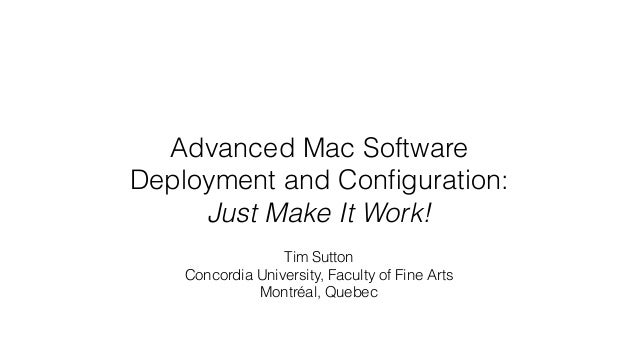

- IMAGE A MAC FOR DEPLOYMENT HOW TO
- IMAGE A MAC FOR DEPLOYMENT INSTALL
- IMAGE A MAC FOR DEPLOYMENT WINDOWS
This is commonly used to reboot the machine after installation, using the following commands:Ĥ. Command line (optional): Specifies a command to run after installation has completed.PKG: /usr/sbin/installer -pkg application_installer.pkg -target /.MSI: msiexec /quiet /i application_installer.msi.
IMAGE A MAC FOR DEPLOYMENT INSTALL
The following list shows the actual install command run on the end-device, where refers to the contents of the Installation arguments field in Dashboard: Installation arguments (optional): If the installer must be run with specific command line arguments, they can be listed here.Install in foreground (Windows-only): Allow the installer to show user prompts, instead of silently installing in the background.If auto-install is disabled, the application won't be installed until it's manually pushed by navigating to Systems manager > Manage > Apps, and selecting Push > Push to all. Dashboard users can manually queue install requests via the device page, or by pressing the Repush buttons on this page. Disable install on save: By default, the application will be auto-installed the moment the Save button is clicked.Please refer to our documentation for more information on scoping by device tag. Scope: Specifies a scope of devices that will have this application installed.Please refer to Apple's documentation for their recommended steps. app file can be used, but it must be wrapped in a. Note: The following installer file types are supported:
IMAGE A MAC FOR DEPLOYMENT WINDOWS
Windows applications can be installed in the foreground in order to prompt user interaction. Note: The installer must be silent (require no user interaction) in order for the application to install correctly in the background.

IMAGE A MAC FOR DEPLOYMENT HOW TO
The following instructions outline how to deploy a new application, as well as overview additional installation options: Using Systems Manager, suites of applications can very easily be deployed to end user devices.


 0 kommentar(er)
0 kommentar(er)
